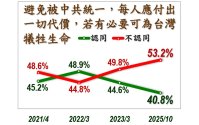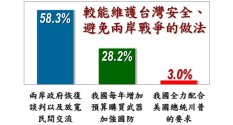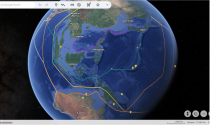PRC Strategy in a Taiwan Contingency - 14th FYP vs 15th FYP
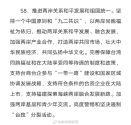
Promote the peaceful development of cross-Strait relations and the reunification of the motherland. Uphold the one-China principle and the “1992 Consensus,” take the well-being of compatriots on both sides of the Strait as the guiding purpose, and promote the peaceful and integrated development of cross-Strait relations. Strengthen industrial cooperation across the Strait, build a common cross-Strait market, and expand the Chinese nation’s economy while jointly promoting Chinese culture. Improve systems and policies that safeguard the welfare of Taiwan compatriots and ensure they enjoy equal treatment on the mainland. Support Taiwan businesses and enterprises in participating in the Belt and Road Initiative and in national regional-coordination development strategies. Support eligible Taiwan-funded enterprises in being listed on the mainland’s stock markets, and support Fujian in exploring new paths for cross-Strait integrated development. Strengthen grassroots and youth exchanges across the Strait. Remain highly vigilant against and firmly curb “Taiwan independence” separatist activities. (14th FYP)
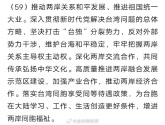
Promote the peaceful development of cross-Strait relations and advance the great cause of national reunification. Fully implement the Party’s overall strategy for resolving the Taiwan question in the new era, resolutely combat “Taiwan independence” separatist forces, oppose interference by external forces, safeguard peace and stability in the Taiwan Strait, and firmly maintain the initiative and leadership in cross-Strait relations. Deepen cross-Strait exchanges and cooperation, and jointly inherit and promote Chinese culture. Promote with high quality the construction of demonstration zones for cross-Strait integrated development, strengthen industrial cooperation, and advance cross-Strait economic cooperation. Implement policies that ensure Taiwan compatriots enjoy equal treatment, create better conditions for them to study, work, and live on the mainland, and enhance the well-being of compatriots on both sides of the Strait. (15th FYP)

Promote the peaceful development of cross-Strait relations and the reunification of the motherland. Uphold the one-China principle and the “1992 Consensus,” take the well-being of compatriots on both sides of the Strait as the guiding purpose, and promote the peaceful and integrated development of cross-Strait relations. Strengthen industrial cooperation across the Strait, build a common cross-Strait market, and expand the Chinese nation’s economy while jointly promoting Chinese culture. Improve systems and policies that safeguard the welfare of Taiwan compatriots and ensure they enjoy equal treatment on the mainland. Support Taiwan businesses and enterprises in participating in the Belt and Road Initiative and in national regional-coordination development strategies. Support eligible Taiwan-funded enterprises in being listed on the mainland’s stock markets, and support Fujian in exploring new paths for cross-Strait integrated development. Strengthen grassroots and youth exchanges across the Strait. Remain highly vigilant against and firmly curb “Taiwan independence” separatist activities. (14th FYP)

Promote the peaceful development of cross-Strait relations and advance the great cause of national reunification. Fully implement the Party’s overall strategy for resolving the Taiwan question in the new era, resolutely combat “Taiwan independence” separatist forces, oppose interference by external forces, safeguard peace and stability in the Taiwan Strait, and firmly maintain the initiative and leadership in cross-Strait relations. Deepen cross-Strait exchanges and cooperation, and jointly inherit and promote Chinese culture. Promote with high quality the construction of demonstration zones for cross-Strait integrated development, strengthen industrial cooperation, and advance cross-Strait economic cooperation. Implement policies that ensure Taiwan compatriots enjoy equal treatment, create better conditions for them to study, work, and live on the mainland, and enhance the well-being of compatriots on both sides of the Strait. (15th FYP)

